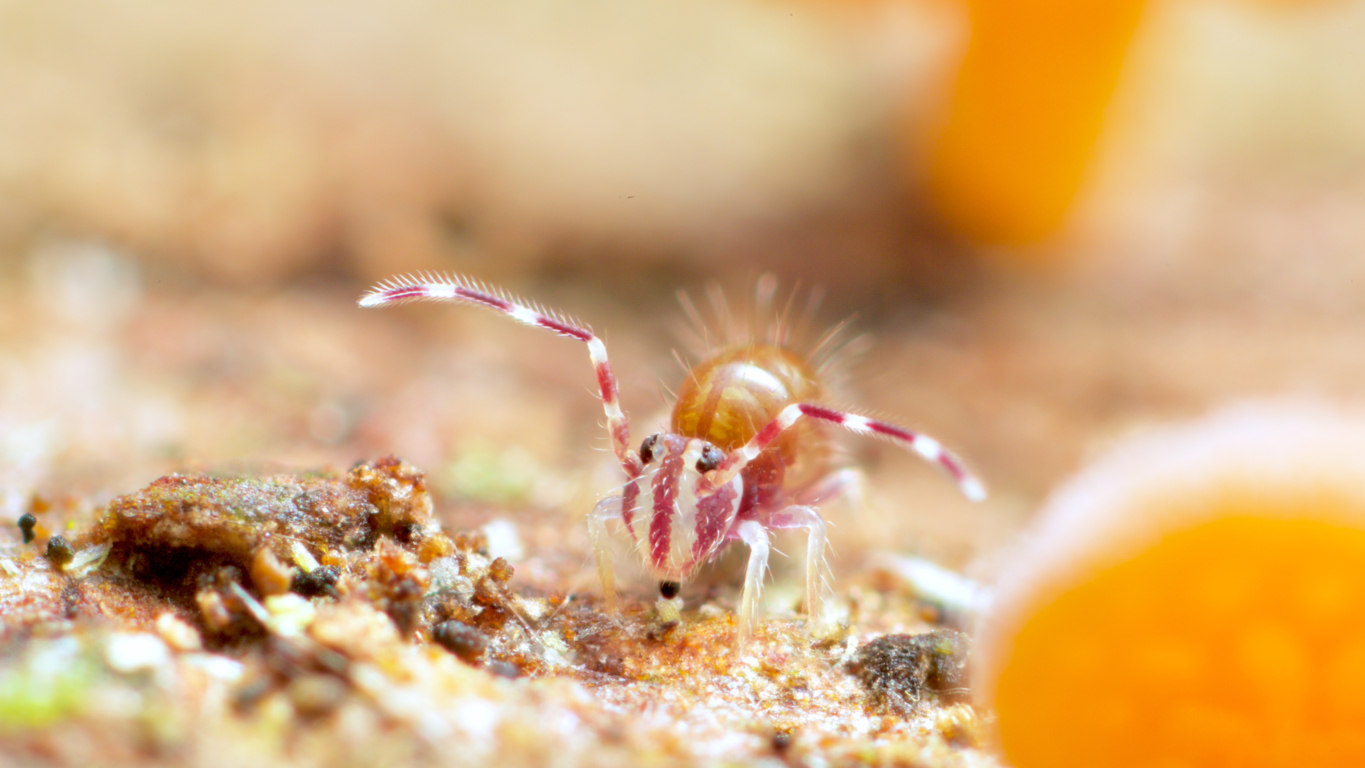
Collembola
Collembolans are one of the most abundant and diverse groups of soil fauna, with estimates of 100,000 individuals per square meter of soil and approximately 9000 described species so far. Collembolan species present a global distribution, from the Arctic to Antarctica, occurring typically in soils and litter layers of forests, meadows, arable fields, but also in a wide range of other habitats [1],[2]. Collembolans are litter transformers and microbivores, playing a key role in litter decomposition and the function of Nutrient Cycling namely by stimulating fungal activity and dispersal [1],[2],[3]. They are also an important food source for several soil predators and thereby a central component in soil food webs.
Collembolan species and diversity are often used as bio-indicators responding to environmental and ecological factors, from soil chemistry and microclimatic conditions to land-use change and management intensity in forest and agroecosystems [2],[4],[5],[6].
Collembolan communities can be sampled by standardized techniques, involving specimen extraction by behavioral methods (e.g. Berlese-Tullgren funnels and the high-gradient MacFadyen apparatus) [1],[2]. Sorting and taxonomic identification are facilitated by available identification keys. Identification of collembolan communities can be also achieved by promising molecular analyses tools, including DNA metabarcoding techniques [2] (cDNA and eDNA).
Collembola species display a wide variation of eco-morphological traits indicating different life-forms related to vertical distribution in soils and feeding habits [2],[7]. Collembolan traits are an insightful tool to understand mechanisms underlying key soil processes and community responses to environmental conditions at local and landscape scales [5],[8],[9]. Collembolan life-forms have already been included in soil quality indices (e.g. QBS) to assess soil quality and land-use sustainability [9],[10].

Text by Dr. Pedro Martins, Soil Ecology and Ecotoxicology Laboratory (SEEL), Centre for Functional Ecology, University of Coimbra
[1] Hopkin SP. 1997. Biology of the Springtails. Oxford University Press, Oxford.
[2] Potapov A. et al. 2020. Towards a global synthesis of Collembola knowledge – challenges and potential solutions. Soil Organisms 92: 161-188.
[3] Rusek J. 1998. Biodiversity of Collembola and their functional role in the ecosystem. Biodiversity and Conservation 7: 1207–1219.
[4] Sousa JP et al. 2006. Changes in Collembola richness and diversity along a gradient of land-use intensity: a pan European study. Pedobiologia 50: 147–156.
[5] Martins da Silva P et al. 2012. Environmental factors at different spatial scales governing soil fauna community patterns in fragmented forests. Landscape Ecology 27: 1337–1349.
[6] Vandewalle M. Et al. 2010. Functional traits as indicators of biodiversity response to land use changes across ecosystems and organisms. Biodiversity and Conservation 19: 2921–2947.
[7] Ponge JP. 2000. Vertical distribution of Collembola (Hexapoda) and their food resources in organic horizons of beech forests. Biology and Fertility of Soils 32: 508–522.
[8] Salmon S et al. 2014. Linking species, traits and habitat characteristics of Collembola at European scale. Soil Biology and Biochemistry 75: 73–85.
[9] Parisi V et al. 2005. Microarthropod communities as a tool to assess soil quality and biodiversity: a new approach in Italy. Agriculture, Ecosystem and Environment 105: 323–333.
[10] Menta C et al. 2018. Soil Biological Quality index (QBS-ar): 15 years of application at global scale. Ecological Indicators 85: 773–780.
